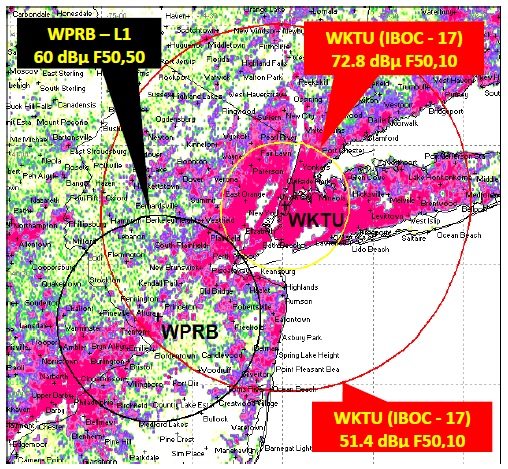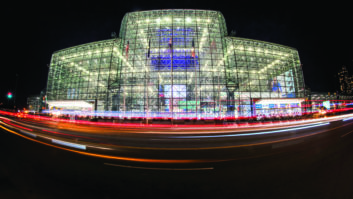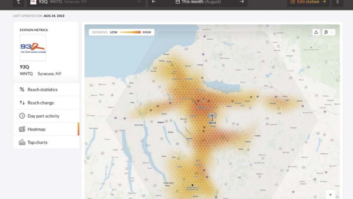Xperi and the National Association of Broadcasters believe many FM HD Radio stations in the United States should be allowed to raise their digital power levels and could do so without causing interference problems. So they are asking the Federal Communications Commission to update the formula that is used to make those distinctions.
In a petition for rulemaking, the organizations say the change would allow more HD Radio stations to increase digital power over the currently authorized digital ERP of –14 dBc, without need for separate FCC authorization.
“Approving this request will serve the public interest by improving digital FM coverage and digital FM signal penetration of buildings while continuing to minimize the probability of harmful interference to adjacent-channel stations,” Xperi and NAB wrote. Xperi is the developer and licensor of HD Radio technology.
The commission originally authorized FM stations to operate with digital ERP equal to 1 percent of analog power or –20 dBc. In 2010 it allowed stations to operate at –14 dBc but to allow stations that meet certain guidelines to increase to –10 dBc, or 10 percent of analog power.
In some cases, to operate above –14 dBc, stations must submit a request with an analysis of its potential to cause interference to adjacent-channel analog signals. It used a technical formula developed by National Public Radio and supported by Xperi predecessor iBiquity Digital.
But Xperi and NAB said this approach was intentionally conservative and can now be loosened based on field experience. It said the existing approach uses symmetric sidebands for all calculations, eliminating a path for many stations to increase power on at least one sideband and improve digital coverage. Further, they said, real-world experience has shown that the existing formula is too restrictive.
In practice, the digital service has never replicated analog coverage, and the proponents say this has frustrated some radio owners and slowed station adoption of the technology. They say a less-restrictive “market-based formula for assessing digital interference risk” will help encourage more adoption by radio stations.
“The proposed formula better reflects the real-world interference environment in the FM band and the appropriate level of protection that first-adjacent stations need from harmful interference,” they wrote.
(The petition dovetails with a request filed in 2019 for a rulemaking proceeding to permanently authorize FM radio stations to utilize IBOC with asymmetric sideband power levels without the need for separate or experimental authorization. Xperi and NAB are now asking that the two petitions be combined into one rulemaking proceeding.)
If more stations adopt HD Radio, Xperi and NAB wrote, transmission equipment manufacturers will continue to invest in the development of digital radio equipment, reducing equipment costs and expanding the ability of smaller broadcasters to afford the conversion to HD Radio.
They told the FCC that they conducted an engineering study working with broadcast engineers at Audacy and iHeartMedia examining a number of short-spaced FM stations and collecting data.
“The study identified many stations currently operating at –14 dBc that exceed the interference levels the current formula would prohibit for stations seeking to operate above –14 dBc. However, even with those elevated levels of potential digital interference, there have been no well-documented reports of interference by any of those stations.”
They concluded that the formula was restricting increases in digital power even at levels that would not cause harmful interference.

In addition, field tests using pubcaster WNYC(FM), and Audacy stations WZMX(FM) and WIP(FM), were conducted with FCC experimental authority to determine if the Audacy stations could operate at the proposed higher power without creating interference to first-adjacent channel WNYC. Separate tests in Connecticut and New Jersey determined “there was no significant change or degradation of the desired WNYC signal” as the Audacy stations raised power.
Data from Xperi indicates growth in the number of HD Radios in the field, mostly in vehicles. The firm says 59% of new vehicles delivered in the U.S. contain original equipment HD Radios and that in total, 90 million HD Radio receivers have been installed in cars and trucks.
The FCC adopted hybrid HD Radio in-band, on-channel operation in 2002. Of the roughly 10,875 FM stations in the United States, approximately 2,600 broadcast in digital FM.
The proposed new formula and supporting documentation are laid out in the petition, which you can read here.
An earlier version of this article stated incorrectly that WNYC raised its power level during the tests.












